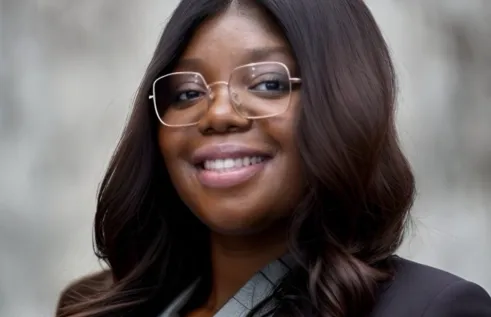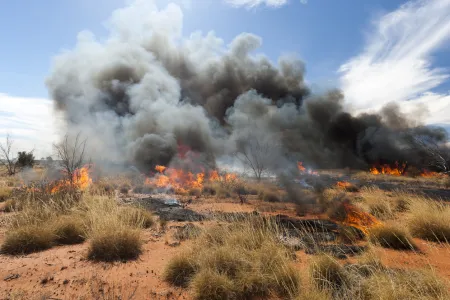News
CDU Fire trackers receive additional funding to help with land management across Northern Australia
Fire season in the Northern Territory is officially upon us, and Central Australia is not out of the inferno just yet.
CDU's Northern Institute Research Development Officer and fire expert Rohan Fisher is worried there is still time for a massive fire event in the Central Desert region.
“In the desert, fire burns where water flows because that’s where fuel, in the form of vegetation, is heaviest.”
Over the past year Alice Springs and its surrounding areas has had one of the wettest seasons on record leaving the desert full of large fuel zones that are highly flammable.
Parts of Alice Springs were under a Watch and Act alert over the Easter long weekend, and fires west of Alice could be seen from space. Additional fire services have been flown to Alice Springs as a precautionary measure to help mitigate any additional risks.
Mr Fisher said even as the weather cools it is important to be aware that the fuel and vegetation is still there.
“The reality is that the threat doesn’t just go away after summer ends, the fire fuel will still remain and will be ready for when the extreme heat returns.”
In the top end of the Territory the lead up to fire season has just begun with locally managed burn-offs, however in Central Australia, fire management is not done to the same scale.
“Northern Australia is prone to large yearly fires therefore, the fire management is much more embedded into land management practices, the same cannot be said for Central Australia,” Mr Fisher said.
Experts are worried that if the expected fires do happen they could have a devastating impact on remote communities, local tourism as well as the agriculture sector.
“Fires have the potential to impact First Nation’s way of life, flora and fauna as well as local industries such as tourism or the pastoral sector,” Mr Fisher said.
To help combat the fires and continued land management the Disaster Resilience and Recovery Agency announced an additional $775,000 dollars towards CDU's Research Institute Environment & Livelihoods (RIEL) Northern Australia and Rangelands Fire Information service (NAFI).
The service provides real-time bushfire information via a web service and on smart phones through the NAFI mobile app and is highly regarded across northern Australia and beyond as it now maps over 70% of the continent.
Mr Fisher explained that this is the 19th year that NAFI has been providing critical fire information across Northern Australia and the Rangelands -underpinning a large and growing carbon abatement industry on First Nation’s land and supporting pastoral land management.
“NAFI probably has had the greatest long-term impact on supporting First Nation’s livelihoods, the pastoral industry, and the ecology of northern Australia - and has become deeply embedded in the culture of land management across northern Australia,” he said.
Visit the NAFI website to find out more about fire mapping and tracking - Northern Australian Fire Information (firenorth.org.au)
Related Articles

Conservation planning ‘good for biodiversity and business’
The Northern Territory’s investment in solar and wind energy production needs to benefit people and the planet, but new research highlights critical pitfalls in planning.
Read more about Conservation planning ‘good for biodiversity and business’
Where rubber meets the road: Old tyres are key to building tougher roads
Almost half of the Northern Territory’s worn-out tyres end up in landfills – with the rest exported interstate for recycling – but a study led by Charles Darwin University (CDU) is repurposing the discarded rubber to build stronger, sustainable roads that meet the NT’s unique needs.
Read more about Where rubber meets the road: Old tyres are key to building tougher roads
Social media subjecting Black women to radicalised digital policing
Influencers use oppression, manipulation and weaponisation to police Black women on social media, according to new research uncovering the entrenched nature of digital racism.
Read more about Social media subjecting Black women to radicalised digital policing
